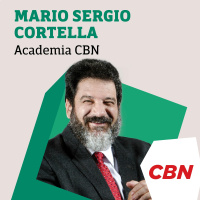Synopsis
A show exploring the science and learning about the scientists of the Colorado Plateau from KZMU Moab's Community Radio Station
Episodes
-
The Art and Science of Conservation
07/04/2023 Duration: 20minAside from the inherent beauty of a pinon-juniper ecosystem, the health of such woodlands are tied to broader climate swings. This is the awareness that the project Sentinels hopes to bring to light. The brainchild of Todd Anderson, Bruce Crownover, and Gary Machlis, the Sentinels project uses art+science to showcase the pinon-juniper adaptation to increased aridification in the deserts of the American Southwest. From fieldwork in Grand Staircase Escalante and Bears Ears National Monuments, these fine art books contain unique art prints and prose and can be found on display at fine museums and universities.
-
Beaver and Healthy Riverscapes
03/03/2023 Duration: 19minWhile modern day river systems are highly engineered to efficiently move water, this is not necessarily a “healthy” condition. Joe Wheaton, a fluvial geomorphologist and Professor of Riverscapes at Utah State University, works to better understand the dynamics of fluvial environments and their subsequent management and restoration. We talk with Joe about his research on how the dam building activity of beaver can alter physical habitat for their own benefit as well as many other fauna and flora. This activity can also help create resiliency in a river corridor facing a warming climate.
-
Reconstructing Climates of the Past
03/02/2023 Duration: 21minThere has been a long history of climate transitions in the southwest and the people who have lived in this region for tens of thousands of years have dealt with this climate change through time, especially with adaptations of their food systems. We talk with Kyle Bocinsky whose specialty is paleoclimate reconstruction, and specifically, looking at how past farmers responded to climate change and negotiated the social implications of climate change in their societies. We explore the adaptation techniques that humans have used in the past, and how we can use them to learn about our future.
-
Preserving Ancestral Puebloan Roads
06/01/2023 Duration: 17minA series of linear roads were built around 1000 years ago all over the four corners area, but focusing on the Chaco Canyon region. We talk with Rob Weiner – archaeologist, anthropologist, and student of religion – whose research at the University of Colorado in Boulder focuses on monumental roads that the ancestors of the Pueblo and Diné people built about 1000 years ago here on the Colorado Plateau. We talk about the significance of these architectural monuments, how they are mapped out, and why it is important to preserve them.
-
Sagebrush Ecosystems of the West
02/12/2022 Duration: 20minThe sagebrush ecosystem in Utah and the greater Western U.S. is actually its own biome, or biological community that has formed in response to the physical environment in which it is found. There is more sagebrush in the West than forest. We talk with Adam Mahood of the USDA Agricultural Research Center about his work with sagebrush ecosystems in terms of their distribution, challenges, and what they may look like into the future.
-
What do Lichen Like?
28/10/2022 Duration: 19minBrendan Moore was one of the first round of Grand County High School students to participate in Science Moab's School to Science program, which pairs GCHS students with scientists for mentorship opportunities in the field and the lab. In this high-level internship, Brendan received guidance on how to develop his own research question and experimental method that he would use to investigate it. Brendan ultimately chose to study patterns of rock lichen development. We talked with Brendan about his experience.
-
Mountain Snow to Desert Flow
21/10/2022 Duration: 20minMoab is known as a Colorado River town, but the key to its existence is the LaSal Mountains. With peaks over 12,000’, the LaSal Mountains contain the snowpack that recharges several aquifers that produce potable water for Moab. Hydrogeologist Tom Lachmar talks about the path water takes from the high peaks of the LaSals to the Colorado River. We also talk with Tom about the several water studies that have been conducted on Moab’s aquifers and what the results mean for the future.
-
Science on the Range
07/10/2022 Duration: 21minWith a warmer and drier climate dominating the Colorado Plateau, traditional cattle ranching has its challenges. We talk with Utah State University PhD students Will Munger and Maria Stahl about their work at the Dugout Ranch in San Juan County, UT. The Criollo cattle, first brought to the New World by Christopher Columbus, are more adapted to arid climates, forage on more native vegetation, and travel farther from water sources. The introduction of these cattle at Dugout Ranch is part of an effort to move towards more sustainable ranching in the desert southwest.
-
Solace in the Desert
30/09/2022 Duration: 19minWe talk with author, photographer, and conservationist Jonathan Bailey about his latest work, “When I Was Red Clay”. Jonathan writes about his struggles growing up and how the natural world, namely the deserts of southern Utah, provided solace. Amongst the many essays in the book, we talk about the colors of the desert, dragonflies, and preserving badlands from energy development.
-
Geography of the Bears Ears
23/09/2022 Duration: 19minConsider making a map of land use issues across the Bears Ears National Monument. This is what Gustavo Ovando-Montejo, Assistant Professor at USU Blanding, is working on. Gustavo uses geography and social science to understand landscapes and how people interact with them.
-
Where the Sea Used to Be
16/09/2022 Duration: 20minOver 65 million years ago, a seaway existed across North America from the present-day Gulf of Mexico to present-day Alaska. Peter Flaig, Research Scientist at the Bureau of Economic Geology in Austin, TX, has studied the geology of this seaway by looking at deposits from the southwest US into Canada and Alaska. We talk with Peter about the margin of this seaway that includes parts of the present-day Colorado Plateau.
-
Reintroducing the Wolf
09/09/2022 Duration: 19minThe historic distribution of wolves includes most if not all of Utah. As wolves migrate out of the Yellowstone reintroduction area, their numbers expand both to the north and south. We talk with Kirk Robinson, founder and executive director of Western Wildlife Conservancy, about what wolves are doing, the ecosystems they live in, and what it might mean to have wolves back on the western slope and into the historic ranges within Utah.
-
Wildfire Science, Pt. 2
02/09/2022 Duration: 20minThis is the second part of a two part series on the science of fire brought to you by our partners at Utah Tech University and the Southern Utah Science Cafe. This discussion was captured live early in 2022 in St. George, UT and pertains to the impacts of wildfires on the land and its inhabitants. Panel members include Greg Melton (Utah Tech University Department of Earth, Energy, and Environmental Science), Mike Schijf (Biologist, Washington County Habitat Conservation Plan), and Jason Whipple (Director, Washington County Emergency Services).
-
Wildfire Science, Pt. 1
26/08/2022 Duration: 21minThis is the first part of a two part series on the science of fire brought to you by our partners at Utah Tech University and the Southern Utah Science Cafe. This discussion was captured live early in 2022 in St. George, UT and pertains to the impacts of wildfires on the land and its inhabitants. Panel members include Greg Melton (Utah Tech University Department of Earth, Energy, and Environmental Science), Mike Schijf (Biologist, Washington County Habitat Conservation Plan), and Jason Whipple (Director, Washington County Emergency Services).
-
Learning about Lichen
19/08/2022 Duration: 19minWhether on rock or vegetation, lichen can be found all around us and play surprising and complex roles. Steve Leavitt, an evolutionary biologist at Brigham Young University, is the curator of the lichen collection at BYU’s Life Science Museum. We talk with Steve about what lichen are composed of and why we should care about these colorful and unique life forms.
-
Researching the Rattler
12/08/2022 Duration: 19minThere are lots of myths and misinformation surrounding rattlesnakes and snakes in general. We talk with Scott Gibson, Wildlife Conservation Biologist for the Southeastern Region with the Utah Division of Wildlife (UDWR), about his research and interest in rattlesnakes. Scott sets the record straight on many of the common falsehoods about rattlesnakes and talks about where you may (or may not) encounter the rattle.
-
The DNA of Soils
05/08/2022 Duration: 20minMichael Remke, a researcher and lecturer at Fort Lewis College in Durango, CO, identifies the connections native plant communities have with their mycorrhizae (plant root associated fungi). We talk about how he applies this research to reforesting programs, rebuilding and replanting after high-intensity disturbance events, and utilizing next-generation sequencing to predict the genetic make-up of soils already long-gone.
-
Climate Adaptation and Land Management
29/07/2022 Duration: 19minBeginning in 2001, an executive order mandated that the Bureau of Land Management consider climate change in their reports and their management planning. We talk with wildlife ecologist Lainie Brice about a project she was a part of for the climate adaptation science program at Utah State University. A key feature of this project was looking at the gap between scientific literature on climate change and the actual land management practices within the Bureau of Land Management.
-
Biomass for the Masses
22/07/2022 Duration: 21minBiomass is anything that has ever grown or anything organic from bugs, to animals, to plants, and everything in between Darren McAvoy, Extension assistant professor at Utah State University, is a forester by trade and the chair and co-founder of Utah biomass resources group. We talk with him about biomass and the product, biochar, and how he is working to reduce hazardous fuels in the forest and educate people about the advantages of biochar.
-
Lakes and Greenhouse Gases
15/07/2022 Duration: 20minWhen considering sources of greenhouse gases, lakes and reservoirs may not immediately come to mind, but they are a significant part of the global greenhouse gas budget. Bridget Deemer is a research ecologist at the U.S. Geological Survey’s Grand Canyon Monitoring and Research Center. Her research aims to understand how human activities are affecting the way that energy and nutrients cycle through ecosystems. She also continues to be involved in efforts to understand methane emissions from lakes and reservoirs, including Lake Powell.

































